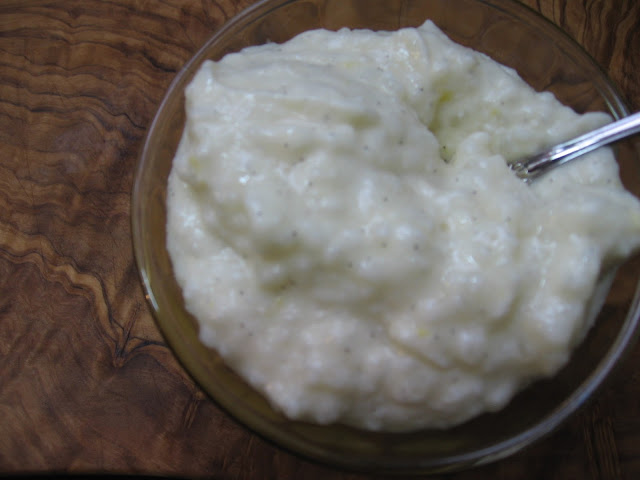I remember the first time I made chocolate pudding. I was about 11 years old, and my great grandparents were at my house. My Gramma Shirley brought me over to the stove with my copy of The Boxcar Children Cookbook (anyone else remember those books? I loved 'em), and helped me make chocolate pudding. It is one of m most distinct cooking memories.
I don't remember that specific recipe, but I do have an equally-excellent key for chocolate pudding. It's nearly identical to the Vanilla Pudding recipe from earlier this week. If you're still hankering for pudding, don't forget to check out the Tapioca recipe. This chocolate pudding serves as a great base for chocolate cream pie.
********************
Chocolate Pudding
Makes four servings
2/3 cup sugar
1/4 cup cornstarch
1/4 teaspoon salt
1/3 cup unsweetened cocoa powder
2 1/2 cups milk
4 large egg yolks
2 tablespoons unsalted butter, cut into pieces
1 teaspoon vanilla extract
1. Place a fine mesh sieve over a medium bowl; set aside. In a medium saucepan, off heat, whisk together the sugar, cornstarch, cocoa, and salt. Very gradually (a few tablespoons at a time) whisk in milk, taking care to dissolve cornstarch. Whisk in egg yolks.
2. Whisking constantly, cook over medium heat until the first large bubble forms and the mixture begins to thicken. Reduce heat to low, continue to whisk for one minute. Remove from heat and immediately pour through the sieve and into a bowl. Stir in butter and vanilla.
3. Serve warm (with whipped cream, if desired!), or place plastic wrap directly on the pudding (to prevent a skin from forming). Chill at least three hours and up to three days. Before serving, whisk pudding until smooth.
Chocolate Pudding
Makes four servings
2/3 cup sugar
1/4 cup cornstarch
1/4 teaspoon salt
1/3 cup unsweetened cocoa powder
2 1/2 cups milk
4 large egg yolks
2 tablespoons unsalted butter, cut into pieces
1 teaspoon vanilla extract
1. Place a fine mesh sieve over a medium bowl; set aside. In a medium saucepan, off heat, whisk together the sugar, cornstarch, cocoa, and salt. Very gradually (a few tablespoons at a time) whisk in milk, taking care to dissolve cornstarch. Whisk in egg yolks.
2. Whisking constantly, cook over medium heat until the first large bubble forms and the mixture begins to thicken. Reduce heat to low, continue to whisk for one minute. Remove from heat and immediately pour through the sieve and into a bowl. Stir in butter and vanilla.
3. Serve warm (with whipped cream, if desired!), or place plastic wrap directly on the pudding (to prevent a skin from forming). Chill at least three hours and up to three days. Before serving, whisk pudding until smooth.










